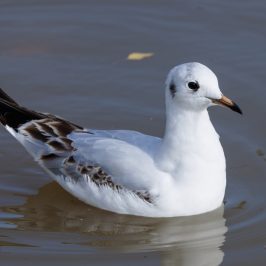When R came downstairs at lunch time and found me doing the Crash Bandicoot dance in the hall, his immediate question was “Odonata?”, which shows how sadly predictable I am. He was probably quite relieved, because he knows how tense I’ve been about the late start to this year’s season – this first record is nearly a fortnight later than last year’s. But the weather lately has been dire, compared with the glorious spring that helped us through the first lockdown of 2020, and that will have held back the early emergences. Now that we are finally under way, I’m hoping it turns out to be a memorable Odonata year.
In fact, although her colours aren’t yet fully developed, this Large Red Damselfly looks to be quite close to maturity, which suggests that she’s been out and about for at least a week. I found her in dense vegetation on the bank of the stream that marks the far boundary of our garden, where she was a great deal less happy to see me than I was her: the mortality rate among immature damselflies is very high, with a range of predators from spiders through to birds all taking their toll, and she’d have absolutely no reason to suspect me of being anything other than malevolent.
I’d forgotten until I re-read the species accounts in my books that Large Reds have a two year life cycle, which means that she can’t have emerged from either of our ponds. With luck though, she may live long enough to lay some of her eggs in one or both of them, and increase their population of developing larvae.







